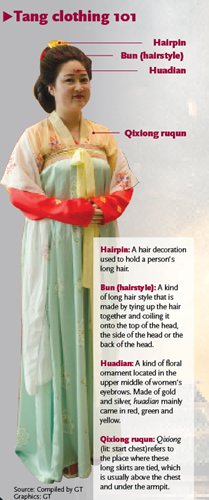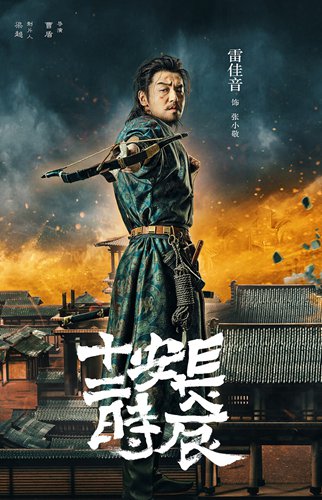HOME >> ARTS
Chinese drama becomes hit with authentic Tang Dynasty clothes
By Chen Xi Source:Global Times Published: 2019/7/21 18:03:39


Promotional material for The Longest Day in Chang'an Photo: IC
Chinese streaming drama, The Longest Day in Chang'an, became a summer hit with its tight storyline and beautiful depiction of life during the Tang Dynasty (618-907), especially when it comes to the costumes.
The Youku series has an 8.6 out of 10 on Chinese media review site Douban.
Posters of characters in elegant makeup and traditional clothing released by Youku on China's Twitter-like Sina Weibo have captured the imaginations of numerous Chinese netizens.
"As a hanfu [Han-style clothing] fan, all the clothing worn by the actresses looked so fancy. I wish I could own all of these clothes! The clothes that appeared in the show could be taught in school textbooks," one netizen commented on Sina Weibo.
"I can tell that the production team prepared for a long time to film the TV drama because of the characters' tasteful clothing. I learned a lot about the traditional Chinese clothing of the Tang Dynasty while watching the drama," Hanrui, a freshman at the Tourism and Culture College of Yunnan University, told the Global Times.
"There is no historical drama like The Longest Day in Chang'an, which is extremely detailed when it comes to the costume design. Although it is inevitable that they mixed elements for women's clothing from the Early Tang, the Flourishing Period and the late Tang Dynasty, the drama has done a very good job when it comes to the accuracy of the clothes," Zhu Hong, a clothing designer and an expert in Tang era clothing in Beijing, told the Global Times.
Pleasantly plump
From the Early Tang to the Late Tang, women's dresses evolved from narrow and small to loose and large. In the Early Tang, women usually wore short shirts with long and narrow sleeves and long skirts that hung from their waists to their feet, Wenshiyan, a history focused WeChat blog, wrote in an article on July 13.
During the Flourishing Period, plump figures were considered beautiful and this aesthetic was gradually extended to clothing. Shirts with loose and large sleeves kicked off this stage and during the Late Tang women's sleeves were generally more than 1.2 meters long.
Meanwhile, the style of collars slowly changed from round or square collars to sexier U-shaped collars.
Outside influences
Ge Chengyong, dean of the Institute for Advanced Studies in Humanities and Social Sciences at Shaanxi Normal University, wrote on Sanlianshutong, a Wechat blog, that the changes in fashion during the Tang Dynasty tended to be more ceremonial because noble families, rich merchants and the upper class of ethnic minorities gathered in Chang'an, which was a very cosmopolitan city. This greatly increased demand for clothing in the city and played a leading role in the changes in clothing and urban fashion.
At the same time, the clothing of the Tang Dynasty was also greatly influenced by foreign culture. The population of foreign merchants outnumbered the domestic population in Chang'an at that time and their unique lifestyles presented a very interesting image to locals.
Another factor is the fact that wearing clothing from the Hu (The general name for various Western and Northern ethnic groups) was not considered illegal or immoral, as it was during some earlier dynasties. With this newfound freedom, the clothing of these ethnic groups gradually penetrated into fashion mindset of citizens, becoming many people's favorite style of clothing.
Clothing can represent people's spiritual temperament, especially for social mingling, and also can reflect the changes in urban living habits. This is especially true during the Tang Dynasty, whose cosmopolitan and open society caused clothing to change more rapidly than any previous or following dynasty and break the boundaries of all classes of society.
Newspaper headline: Historical fashion
Posted in: FILM,CULTURE & LEISURE